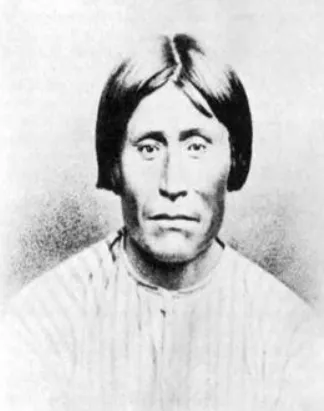Embarking on a journey through the lands of the Nez Perce people is more than just a trip to stunning natural landscapes; it’s an opportunity to delve into the rich history and culture of a resilient nation. The Nez Perce historical sites, scattered across the American Northwest, tell a story of a dynamic past, from a free nomadic life to tragic wars and a arduous quest for freedom.
Uncover Nez Perce History and Culture Through Historical Sites
The Nez Perce, also known as Nimíipuu, meaning “The People,” are a Native American tribe who historically lived on the Columbia River Plateau in present-day Idaho, Oregon, Washington, and Montana. Their history is deeply intertwined with the rivers, mountains, and vast prairies where they once lived a nomadic lifestyle of hunting and gathering. Today, Nez Perce historical sites stand as open books to their proud and poignant past.
Nez Perce National Historical Park
There’s no better place to begin your exploration than the Nez Perce National Historical Park. This isn’t a single location, but a network of 38 sites spread across four states, each telling a unique story, a piece in the larger mosaic of Nez Perce history.

Among the 38 sites within the Nez Perce National Historical Park, visitors can explore:
- Old Chief Joseph’s Village (Wallowa Lake, Oregon): The home of the great Chief Joseph, a symbol of Nez Perce resilience and their desire for peace. The beautiful Wallowa Lake and surrounding mountains are a significant part of the tribe’s history and culture.
- Big Hole National Battlefield (Wisdom, Montana): A somber site of the Battle of the Big Hole in 1877, one of the bloodiest battles of the Nez Perce War. This place marks the immense sacrifice and loss on both sides.
- Nez Perce National Historical Park Visitor Center (Lapwai, Idaho): The “heart” of the National Historical Park, this center provides a comprehensive overview of Nez Perce history, culture, and contemporary life through exhibits, artifacts, and educational programs.
- Canoe Camp – Lewis and Clark & Nez Perce Encounter Site (Weippe, Idaho): The location of the historic meeting between the Lewis and Clark expedition and the Nez Perce people in 1805, marking the beginning of relations between white settlers and the tribe.
- Canyon Creek Battlefield Memorial (Billings, Montana): Another site commemorating the Nez Perce War, the location of the Canyon Creek battle, part of the Nez Perce’s attempt to flee to Canada.
Journey Along the Trail of Tears: The Nez Perce Flight of 1877
The Nez Perce Flight of 1877, also known as the Nez Perce War, is one of the most tragic chapters in the history of the American West. Beginning in the Wallowa Valley, the Nez Perce’s journey of over 1,170 miles (1,880 km), under the brilliant leadership of Chief Joseph, was both a desperate escape from the pursuing U.S. Army and a fight for survival to protect their freedom and culture.
Visitors can trace this migration route through numerous sites along the way:
- Nez Perce National Historic Trail: This historic migration trail stretches across four states, allowing visitors to hike, drive, or ride horseback to experience the landscapes traversed by the Nez Perce people.
- White Bird Battlefield (White Bird, Idaho): The site of the opening battle of the Nez Perce War, where the Nez Perce achieved a resounding victory against the U.S. Army, demonstrating their courage and fighting spirit.
- Clearwater Battlefield (Orofino, Idaho): Another significant battlefield where the U.S. Army attempted to halt the Nez Perce advance but failed.
- Bear Paw Battlefield (Chinook, Montana): The heartbreaking end of the migration, just 40 miles from the Canadian border, where the exhausted Nez Perce were forced to surrender to the U.S. Army. This site is a reminder of the Nez Perce’s resilience, but also their immense loss.
Experience Contemporary Nez Perce Culture
Exploring historical sites is not only about looking back at the past but also an opportunity to understand contemporary Nez Perce culture. Visitors can:
- Visit the Tamkalikin Cultural Village (Wallowa, Oregon): A reconstructed Nez Perce cultural village where visitors can learn about traditional architecture, arts, crafts, and the cultural life of the Nez Perce people today.
- Attend a Powwow: Participate in Nez Perce Powwows to experience traditional music, dances, and meet the modern Nez Perce community.
- Explore Nez Perce Arts and Crafts: Admire and learn about beadwork, weaving, wood carving, and other traditional Nez Perce art forms.
Travel Tips for Exploring Nez Perce Sites
- Best Time to Visit: Summer and fall are the best times to explore Nez Perce historical sites, when the weather is mild and pleasant.
- Plan Ahead: The Nez Perce National Historical Park is vast; plan your itinerary to prioritize the sites you want to visit.
- Learn About the History Before You Go: Read books, articles, and watch documentaries about Nez Perce history to be well-prepared and gain a deeper understanding of the sites.
- Respect Local Culture: When visiting historical sites and interacting with the Nez Perce community, always show respect for their culture and customs.
- Support the Local Economy: Purchase handcrafted Nez Perce souvenirs, enjoy local cuisine, and stay at local businesses to contribute to the community’s economy.
Conclusion
A journey to explore the Nez Perce historical sites is a meaningful experience, offering not only unique travel adventures but also a deeper understanding of the history, culture, and indomitable spirit of a Native American nation. Come and feel, let the stories from the past echo in the majestic mountains and forests, connecting us to an important part of American and world history.